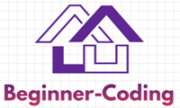Question.To control execution of program to prevent errors and improper use of computer system?
Answer. To understand execution of program & how to prevent a error in computer system Ist of all we understand the Operating System and its components
.
( A ) Introduction to Operating System:
An operating system is a program that manages a computer’s hardware. It also provides a
basis for application programs and acts as an intermediary between the computer user and
the computer hardware. Mainframe operating systems are designed primarily to optimize
utilization of hardware.
Personal computer (PC) operating systems support complex games, business applications,
and everything in between. Operating systems for mobile computers provide an
environment in which a user can easily interface with the computer to execute programs.
Thus, some operating systems are designed to be convenient, others to be efficient, and
others to be some combination of the two.
Computer system can be divided into four components:
1. Hardware – provides basic computing resources CPU, memory, I/O devices.
2. Operating system Controls and coordinates use of hardware among various applications and
users.
3. Application programs – define the ways in which the system resources are used to solve the
computing problems of the users, e.g. Word processors, compilers, web browsers, database
systems, video games.
4. Users People, machines, other computers.
What is operating system Can do?
An operating system is similar to a government, it performs no useful function by itself, it simply
provides an environment within which other programs can do useful work.
OS is a resource allocator: Manages all resources and Decides between conflicting requests for
efficient and fair resource use.
OS is a control program: Controls execution of programs to prevent errors and improper use
of the
computer.
View of operating system:
To understand the operating system’s role, exploring the operating systems can understand
in two viewpoints:
* User View
The user’s view of the computer varies according to the interface being used. Most
computer users sit in front of a PC, consisting of a monitor, keyboard, mouse, and
system unit. Such a system is designed for one user, in other cases, a user sits at a
terminal connected to a mainframe or a minicomputer. Other users are accessing the
same computer through other terminals. These users share resources and may exchange
information where operating system in such cases is designed to maximize resource
utilization (many users). In still other cases, users sit at workstations connected to
networks of other workstations and servers. These users have dedicated resources at
their disposal, but they also share resources such as networking and servers, including
file, compute, and print servers.
* System View
In this context, we can view an operating system as a resource allocator. A computer
system has many resources that may be required to solve a problem: CPU time,
memory space, file-storage space, I/O devices, and so on. The operating system acts as
the manager of these resources.
( B ). Computer-System Organization:
Before we can explore the details of how computer systems operate, we need general
knowledge of the structure of a computer system:
2.1 Computer-System Operation
For a computer to start running—for instance, when it is powered up or rebooted—it needs
to have an initial program to run. This initial program, or bootstrap program, tends to be
simple. Typically, it is stored within the computer hardware in read-only memory (ROM)
or electrically erasable programmable read-only memory (EEPROM), known by the
general term firmware. It initializes all aspects of the system, from CPU registers to device
controllers to memory contents. The bootstrap program must know how to load the
operating system and how to start executing that system. To accomplish this goal, the
bootstrap program must locate the operating-system kernel and load it into memory. Once
the kernel is loaded and executing, it can start providing services to the system and its
users.
bootstrap program is loaded at power-up or reboot
* Typically stored in ROM or EPROM, generally known as firmware
* Initializes all aspects of system
* Loads operating system kernel and starts execution
“The one program running at all times on the computer” is the kernel.
Everything else is either
* a system program (ships with the operating system),
* or an application program.
For more understanding you can also read below mentioned topic
from online:
execution and control of operations









0 Comments
if you have any doubts ,please let me know